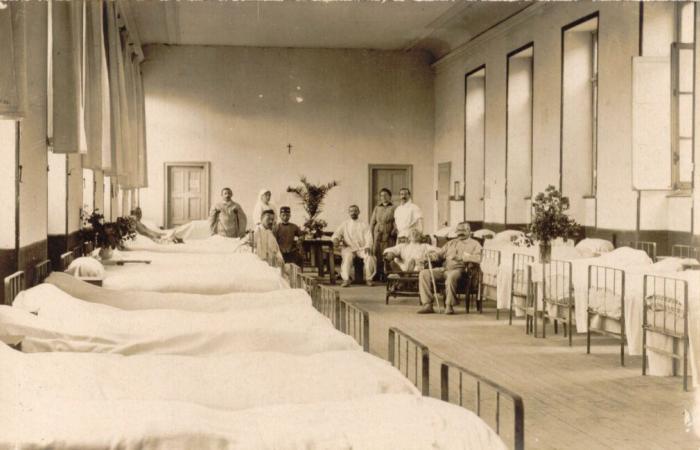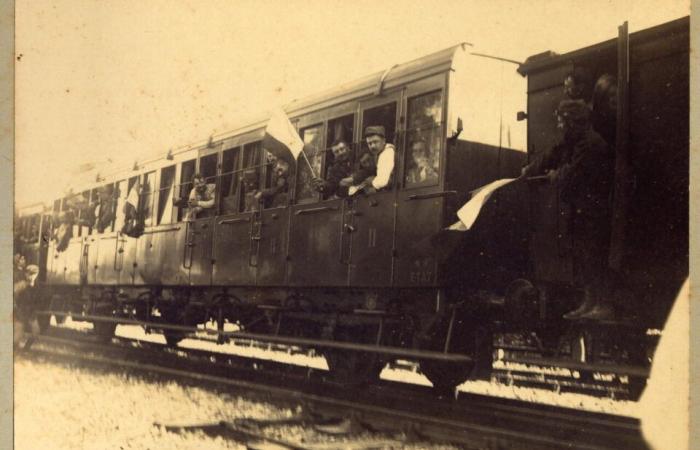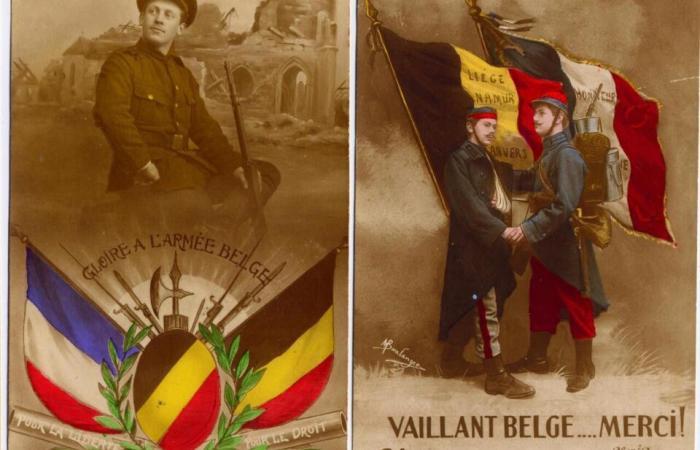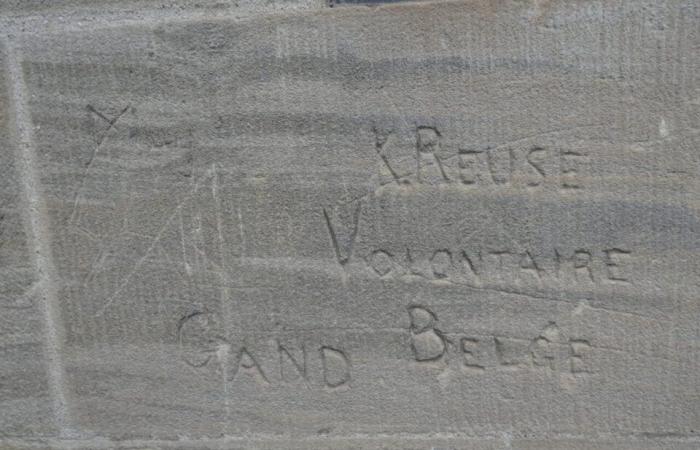Par
Editorial La Presse de la Manche
Published on
Nov 11, 2024 at 4:18 p.m.
See my news
Follow La Presse de la Manche
Far from the front but directly concerned as all French peoplethe Carentanese have largely contributed to thewar effort from 1914 and well after the armistice of November 11, 1918.
It is the 1is August 1914 “at 4 o'clock in the evening” that in Carentan (Manche), as in all towns in France, the tocsin rang and that the town crier read on every street corner the mobilization order and that the police post this order on the walls.
There is general consternation.
Start then a dark period for all, mobilized men but also those who stayed behind, familiesTHE older and the more vulnerable.
It's through railway station that the greatest activity begins in the city. “In fact, between August 2 and 10, 1914, a daily average of 60 trains of soldiers rising to the front passes Carentan station”, applauded by the population crowded together on the quays.
Temporary hospitals
Remaining in the country, the men of the territorial reserve are posted at the entrances to the city and to enter, you had to have a pass.
Passé the enthusiasm of departurethese are other trains which stopped at the station but which brought wounded. Of the temporary hospitals have been installed in various buildings in the city, schools, hospitals, and will accommodate around 250 beds.
The furnishings come from the generosity of the inhabitants and a section of theUnion of French Womenaffiliated with the Red Cross, trains and provides volunteer nursing positions. The first wounded arrived by train Wednesday September 9.
The train was announced for 9:30 p.m., a crowd gradually gathered around the flagged station.
Sadly, the poor wounded, including many colonial soldiers, most of whom came from fights around Meaux (Seine-et-Marne), are “in a lamentable state sometimes without care for several days ».
Carentan honored his “first death” on September 27, first class Henri Thomas of the 278e infantry regiment originally from Limoges (Haute-Vienne), unknown to the locals “but it produced an unprecedented stir”.
Belgian soldiers
The ceremonywas followed by “ a huge and deeply moved crowd“. Unfortunately, this event “was only the first of a long series”.
Carentan welcomed “warmly and fervently” also “no less than 500 Belgian soldiers in a centre d’instruction ” of fall 1914 until December 1915.
Soldiers who were somewhat part of the population and who also integrated into families “with weddings , childrenin and out of marriage. But their departure was discreet. In July 1916 it is a French regiment which arrives in Carentan.
A dark period of deprivation
After the initial enthusiasm, the populations suffered of deprivation et cost of living. “During the entire duration of the war, the state of mind of the population will be that which it manifested from the beginning: courage, confidence, invincible hope in the final victory”, but a few moments undermined this morale.
For families whose fathers, husbands or sons have gone to the front, “one fact upsets the population and produces some discouragement, and that is the sight of so many people in ambush. It is shocking and scandalous not to be able to go out without meeting on every street corner, young and robust fellows, most of them without family responsibilities, with a smug and smug air, who seem defy public opinion and who lead a joyful life…”.

Shortages
The cost of living for most of the “little people facing the hoarders” comes from the scarcity of requisitioned foodstuffs“and especially fraud of all kinds ».
For all, “with the duration of the war and its intensificationit becomes more and more obvious that victory will go to whichever of the two belligerents is able to ensure better mobilization tant at the front and at the back ».
Throughout this period, the shortages multiply, “and it is not as foodit also affects fuels and combustibles notably thecoal », coming mainly from England .
“Famine for the unfortunate”
But the German submarines the boats sink (no less than 129 boats sunk between the many des Veys and that of Mont Saint-Michel with thousands of tons of goods destroyed ).
Carentan knew his lot of demonstrations including on December 30, 1916, “when two 10-ton wagons brought the precious coal to Carentan, it was the riot “. Each Carentan resident was entitled to 25 kg, the stock was exhausted in “the blink of an eye”.
These shortcomings led to the creation of a food store in order to counter price inflationas for the potatoes, so high “that it was faminefor the unfortunate.
A relief commission
A relief commissionwas created by the municipalityfrom the beginning of August 1914, “in order to come to the aid of the families of those mobilized while waiting for the allowance payment“. It will be paid 1 franc 25 per day for the woman, plus 0 franc 50 per child under 16 years old.
A cellarsis also installed, from 1is November 1914, which welcomed no less than 361 children under 16for lunch and dinner.
Child care was put in place throughout the war, “in order to allow women mobilized to work and for this purpose, the city teachersontgave up their vacation ».



Numerous sources of information
“Wanting to retrace the daily life of a town from behind, during the years 1914-1918, is often a delicate matter,” indicates Patrick Fissot, a history professor with a passion for this period. “Not because the sources are lacking. On the contrary, they abound.” Author of a work on “La Manche and the Manchois in the Great War”, and during his research, he was able to note “the richness, variety and quality of the sources still available to work on this period”. According to Patrick Fissot, “although many administrative or political documents were destroyed during the bombings of 1944, there remains an impressive quantity of archives, both private and public.”
A very important source of local history comes from the manuscripts of Pierre Delagarde who was justice of the peace of Carentan from August 17, 1906 to the end of 1919. These writings are deposited in the departmental archives of Manche and were transcribed by members of the association of “Arcades of History” and in particular by Jean-Jacques Bréguet. Pierre Delagarde approached the period as closely as possible and invested a lot in local life through its quality but also on a human level. He is at the origin, in particular, of the food store to remedy shortages and inflation of the most necessary foodstuffs.
The historian René Le Tenneur also contributed to highlighting local history in his work “Carentan through the centuries”.
From our correspondent Brigitte ACHER
Follow all the news from your favorite cities and media by subscribing to Mon Actu.











